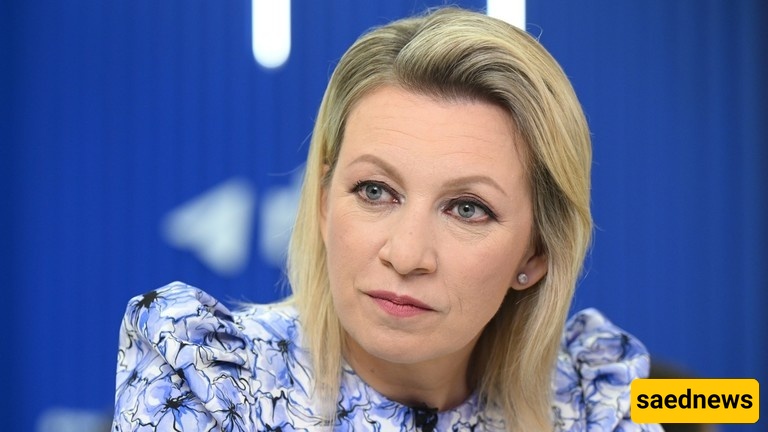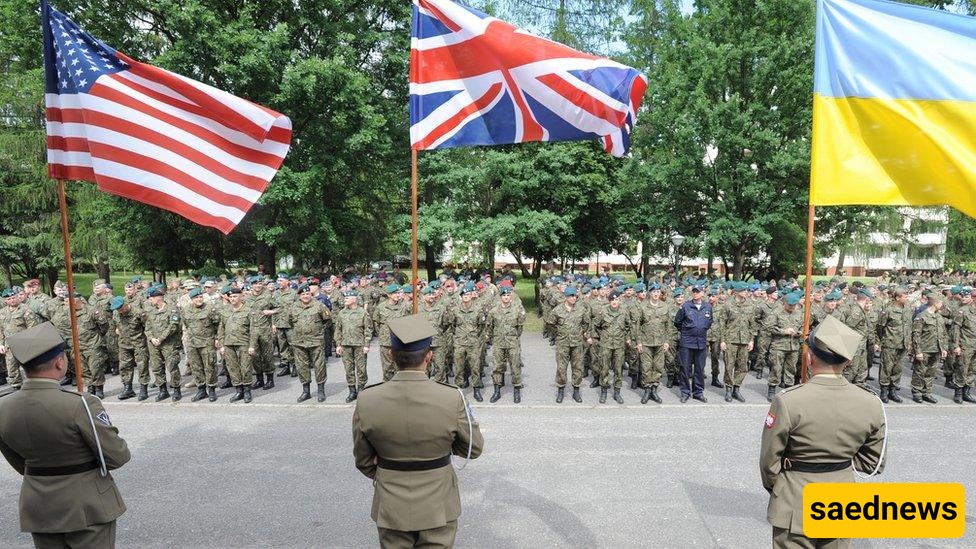SAEDNEWS: Russia’s Strong Reaction to the Potential Deployment of NATO Forces in Ukraine Highlights the Risk of Direct Confrontation with the West

According to Saed News, citing Russia Today, when the Kremlin responded to fresh whispers in Western capitals about the potential direct deployment of NATO forces in Ukraine by stating that such a move would be “unacceptable,” the world once again held its breath, reminded of the danger of direct confrontation between the two major military powers—Russia and NATO. Since the beginning of the Ukraine crisis, one of Russia’s main red lines has been this very issue: that NATO military presence must not reach its borders. In fact, Russia’s 2022 invasion also began with this key justification—a justification repeatedly stated by the Kremlin: “No to NATO expansion.” Now, with discussions about the potential direct or indirect dispatch of NATO forces to Ukraine, Moscow once again, in a warning tone, emphasizes that such a move would be considered crossing a red line and a direct threat to Russia’s existence.

From Moscow’s perspective, the issue is not limited to the deployment of a few thousand troops or some small bases. In Russia’s security logic, any NATO presence in Ukrainian territory signifies a fundamental shift in the balance of power in Eastern Europe and a permanent threat to national security. The Kremlin views this situation as more than a military matter: NATO’s presence in Ukraine, according to Russian leaders, is a form of strategic encirclement that could weaken the country’s deterrent capability and complete the West’s pressure loop. For this reason, in Russian officials’ rhetoric, such deployment is not merely a tactical move but is described as an “existential” act.
This harsh stance has not emerged in a vacuum. In recent months, as the war drags on and Ukraine’s capabilities are eroded, some voices in Europe—particularly from politicians like Emmanuel Macron—have raised the possibility of direct Western troop presence in Ukraine for support or training. Although these statements were immediately tempered by other NATO members, merely making them was enough to provoke a response from Moscow. Russia sees such speculations as a sign that the West is prepared to escalate the confrontation; from the Kremlin’s view, remaining silent on such discussions implies tacit acceptance.
For many analysts, Moscow’s recent warning is not merely a verbal threat but reflects the country’s deep fear of a changing war equation. While Russia has managed to stabilize its position on the battlefield and maintain its defensive lines, direct NATO involvement could disrupt the existing balance. Although Western leaders have repeatedly emphasized that they do not intend to send their soldiers into direct conflict with Russia, the expansion of military aid, field training, and advisor presence has gradually blurred the line between “indirect support” and “direct intervention.”
Meanwhile, the issue carries its own complexities for the West. On one hand, many European and American leaders fear that if Ukraine falls, Europe’s security would be endangered and a clear message would be sent to other revisionist powers. On the other hand, public opinion in Western countries is heavily war-weary, and few are willing to see their children sent to the battlefields of Eastern Europe. This duality has made troop deployment a constant subject of uncertainties and has even been used as a tool for domestic political pressure.
Moscow’s declaration of “unacceptability” is essentially part of the country’s psychological and political deterrence strategy. Russia wants to show the West that NATO’s entry into Ukrainian territory is not negotiable but a red line whose crossing would have unpredictable consequences. What could these consequences be? The Kremlin has openly threatened that if NATO crosses this red line, Russia may take actions beyond Ukraine’s borders. Implicit references to tactical nuclear weapons and increased strategic exercises can be interpreted within this framework.
Nevertheless, some analysts believe that Moscow’s warnings also have a tactical aspect. Russia is well aware that NATO’s direct entry into Ukraine could shift the balance of the war against it. Therefore, it seeks to prevent a consensus among Western countries for such an action by exaggerating the potential risks and costs. In other words, by repeatedly using the term “unacceptable,” Moscow aims to create a form of strategic fear, so that Western leaders even refrain from considering this option.
Amid this struggle, Ukraine also has a dual position. On one hand, Kyiv needs foreign aid more than ever and knows that without Western support, it will not be able to resist Russia. On the other hand, Ukrainian authorities view the issue of NATO troop deployment with caution, fearing that it might provide Moscow with a pretext to expand the war or even weaken part of the international community’s support for Ukraine. In such circumstances, Zelensky and his team try to maintain a delicate balance: pressuring the West to increase support, without letting this support appear as direct military presence.
The legal and political dimensions of the matter are also significant. According to its charter, the North Atlantic Treaty Organization is committed to collective defense of its members, not direct intervention in wars outside its territory. Any deployment of forces in Ukraine could raise serious questions about NATO’s legal framework and political legitimacy. Especially given that in many European capitals, public opinion is skeptical of expanding NATO’s role. These considerations make the likelihood of a unified NATO decision to send forces very low.
However, what Moscow worries about most is the “gradual slip” of the West toward greater intervention. At the start of the war, aid was limited to sending defensive equipment. Then, advanced artillery systems, modern tanks, and long-range missiles were sent to Ukraine. Today, discussions about fighter jets and direct training of Ukrainian forces are ongoing. From Russia’s perspective, this trend shows that the red lines are gradually fading. Therefore, the Kremlin wants to prevent the next stage of this slip: that is, the direct presence of NATO forces on Ukrainian soil.
The potential consequences of such a confrontation for the global order are also significant. A direct confrontation between Russia and NATO would mean a clash between two nuclear powers, which could destabilize the entire international security structure. Many experts believe that even a limited conflict between Russian and NATO forces could quickly escalate and carry the risk of unconventional weapons use. Therefore, Moscow’s recent warning is a serious alarm not only for the West but for the entire world.
Ultimately, it can be said that declaring NATO deployment in Ukraine as unacceptable is, more than a new stance, a reiteration of Russia’s old red line in a stronger form. Moscow wants to show that, despite all sanctions and economic pressures, it will not compromise on national security. The West, in turn, faces a difficult choice in response to this message: either forgo more direct support for Ukraine and accept the risk of Kyiv’s defeat, or approach this red line and take the risk of direct confrontation with Russia.
The reality is that neither side desires direct war, but as history has repeatedly shown, wars do not always begin with conscious decisions; sometimes a series of miscalculations or misunderstandings can bring the world to the brink. Moscow’s recent warning should be taken seriously within this context: not as a tactical bluff, but as a sign of the fragility of the current situation and the danger that continues to loom over Europe and the world.

